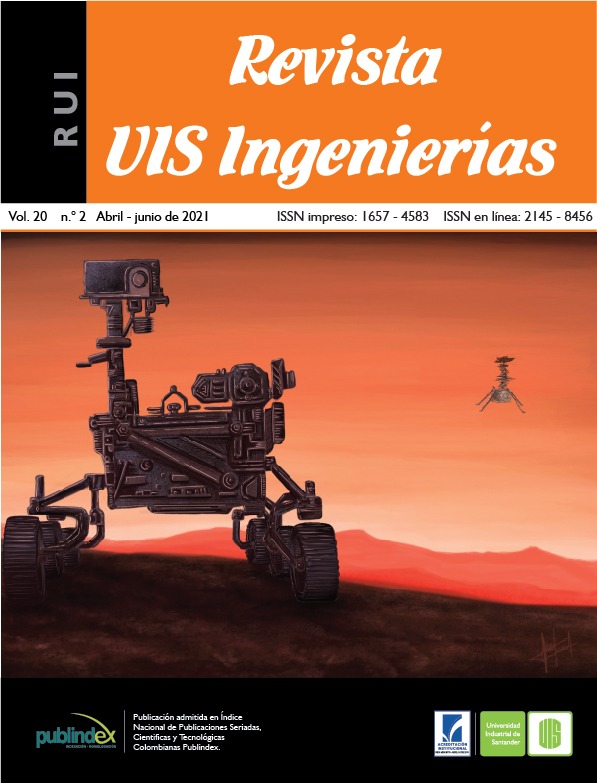Publicado 2021-02-18
Palabras clave
- no-respuesta al ítem,
- representatividad,
- encuesta de hogares,
- datos faltantes,
- calidad de la muestra
- pesos muestrales,
- indicador R,
- MCAR,
- MAR,
- NMAR,
- salarios por hora,
- Colombia ...Más
Cómo citar
Resumen
La no-respuesta a un ítem se produce cuando las unidades muestrales no proporcionan la información solicitada sobre una variable en particular, problema que puede afectar la representatividad de la muestra y la confiabilidad de las estimaciones. Los esfuerzos para reducir las tasas de no-respuesta no necesariamente mejoran la calidad de la información. Además de la tasa de no-respuesta, es posible utilizar indicadores de representatividad para medir la calidad de los datos recopilados. Este documento analiza el mecanismo de no-respuesta a salarios en una encuesta de hogares en Colombia y evalúa la calidad de la información sobre salarios en dos períodos diferentes (2008: 4 y 2017: 4). Los resultados muestran una tasa de no-respuesta baja pero creciente, cuyo comportamiento no parece estar asociado con el conjunto de observables consideradas. Este resultado es de interés ya que la selección del método de imputación adecuado depende de los supuestos en torno al comportamiento de los datos faltantes.
Descargas
Referencias
[2] J. G. Bethlehem, F. Cobben, B. Schouten, Handbook of nonresponse in household surveys. New Jersey, NJ, USA: John Wiley & Sons, 2011.
[3] R. M. Groves, E. Peytcheva, “The impact of nonresponse rates on nonresponse bias: a meta-analysis,” Public Opinion Quarterly, vol. 72, no. 2, pp. 167-189, 2008. doi: 10.1093/poq/nfn011
[4] K. Beullens, G. Loosveldt, R-indicators and fieldwork monitoring RISQ Project. Oxford, Manchester, UK: Manchester University, 2010.
[5] N. Shlomo, B. Schouten, V. de Heij, “Designing adaptive survey design with R-indicators,” in Proc. of the New Techniques and Technologies for Statistics Conference, Brussels, 2013.
[6] A. Luiten, W. Wetzels, “Differential survey strategies based on r-indicators,” in, European Conference on Quality in Official Statistics (Q2010), Helsinki, Finlandia, 2010, pp. 4-6.
[7] J. Kappelhof, “The effect of different survey designs on nonresponse in surveys among non-western minorities in the Netherlands,” Survey Research Methods, vol. 8, no. 2, pp. 81-98, 2013. doi: 10.18148/srm/2014.v8i2.5784
[8] B. Schouten, F. Cobben, P. Lundquist, J. Wagner, Theoretical and empirical support for adjustment of nonresponse by design. Statistics, Netherlands, 2014.
[9] R. Tourangeau, T. Yan, “Sensitive questions in surveys,” Psychological Bulletin, vol. 133, pp. 859-883, 2007. doi: 10.1037/0033-2909.133.5.859
[10] J. G. Hariri, D. Dreyer, “Income and outcomes: social desirability bias distorts measurements of the relationship between income and political behavior,” Public Opinion Quarterly, vol. 81, no. 2, pp. 564-576, 2017. doi: 10.1093/poq/nfw044
[11] C. Giusti, R.J. Little, “An analysis of nonignorable nonresponse to income in a survey with rotating panel design,” Journal of Official Statistics, vol. 27, pp. 211-229, 2011.
[12] N. Schenker, T. E. Raghunathan, P. L. Chiu, D. M. Makuc, G. Zhang, A. J. Cohen, “Multiple imputation of missing income data in the national health interview survey,” Journal of the American Statistical Association, vol. 101, pp. 924 -933, 2006. doi: 10.1198/016214505000001375
[13] S. Rässler, R. Riphahn, “Survey item nonresponse and its treatment,” Allgemeines Statistisches Archiv, vol. 90, pp. 217-232, 2006. doi: 10.1007/s10182-006-0231-3
[14] B. Schouten, F. Cobben, J. G. Bethlehem, “Indicators for the representativeness of survey response,” Survey Methodology, vol. 35, no. 1, pp. 101-113, 2009.
[15] C. Skinner, N. Shlomo, B. Schouten, L. Zhang, J. Bethlehem, “Measuring survey quality through representativeness indicators using sample and population base information,” in Proc. of the New Techniques and Technologies for Statistics, Luxembourg, 2009, pp. 18-20.
[16] C.E. Särndal, S. Lundström, “Assessing auxiliary vectors for control of nonresponse bias in the calibration estimator,” Journal of Official Statistics, vol. 24, no. 2, pp. 167-191, 2008.
[17] B. Schouten, N. Shlomo, C. Skinner, “Indicators for monitoring and improving representativeness of response,” Journal of Official Statistics, vol. 27, pp. 1-24, 2011.
[18] J. G. Bethlehem, F. Cobben, B. Schouten, “A new quality indicator for survey response,” AENORM, vol. 19, pp. 24-28, 2011.
[19] B. K. Atrostic, C. Kalenkoski, “Item response rates: one indicator of how well we measure income,” in Proc. of the Joint Statistical Meetings, Section on Survey Research Methods, Washington, 2002, pp. 94-99.
[20] G. Imbens, D. P. Rubin, Causal inference for statistics, social, and biomedical sciences: an introduction. New York, NY, USA: Cambridge University Press, 2015.
[21] S. P. Sinha, J. Ramoni-Perazzi, G. Orlandoni-Merli, E. Torres, “Weight adjustments after sub-sampling cross-sectional data,” Revista Estadística Española, vol. 59, pp. 45-57, 2017.


